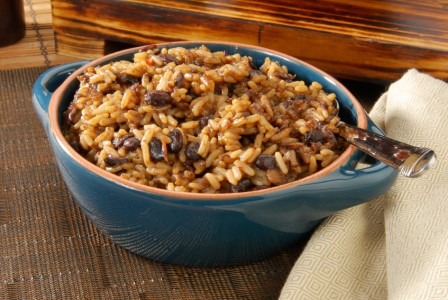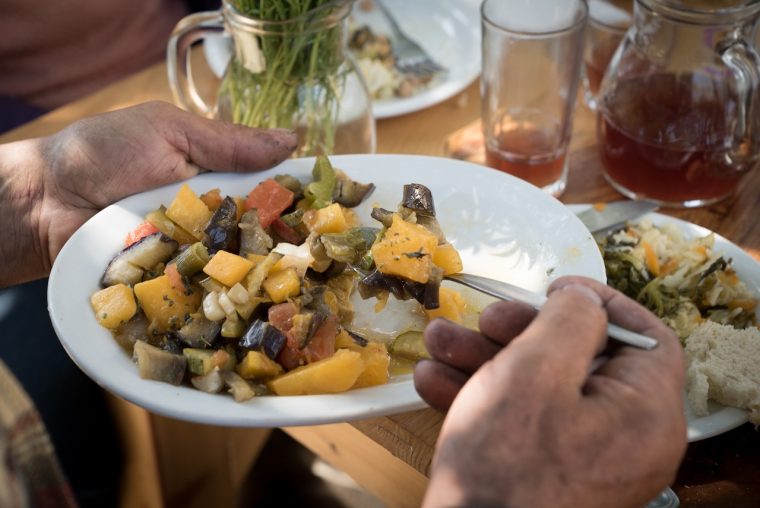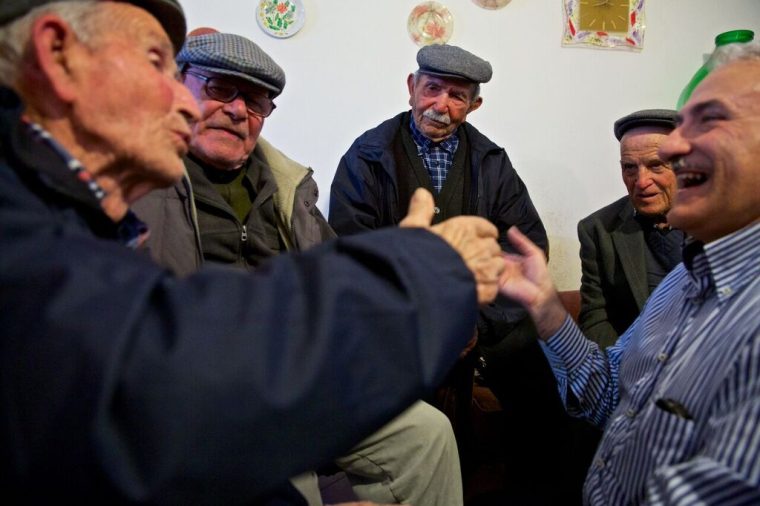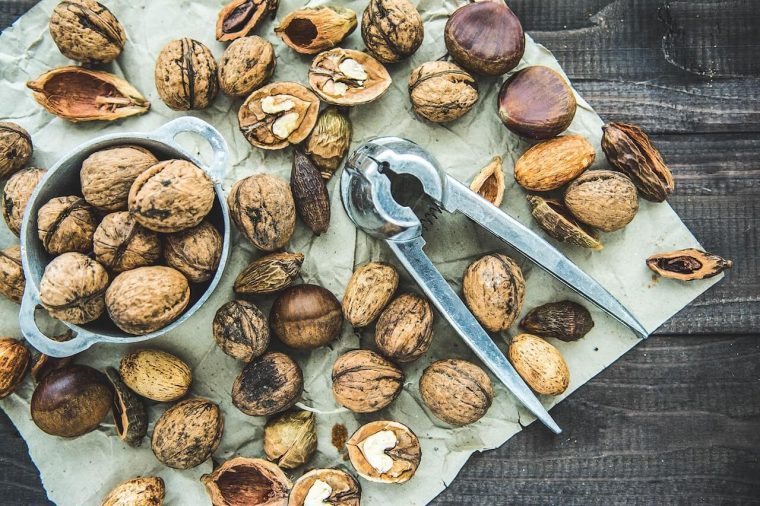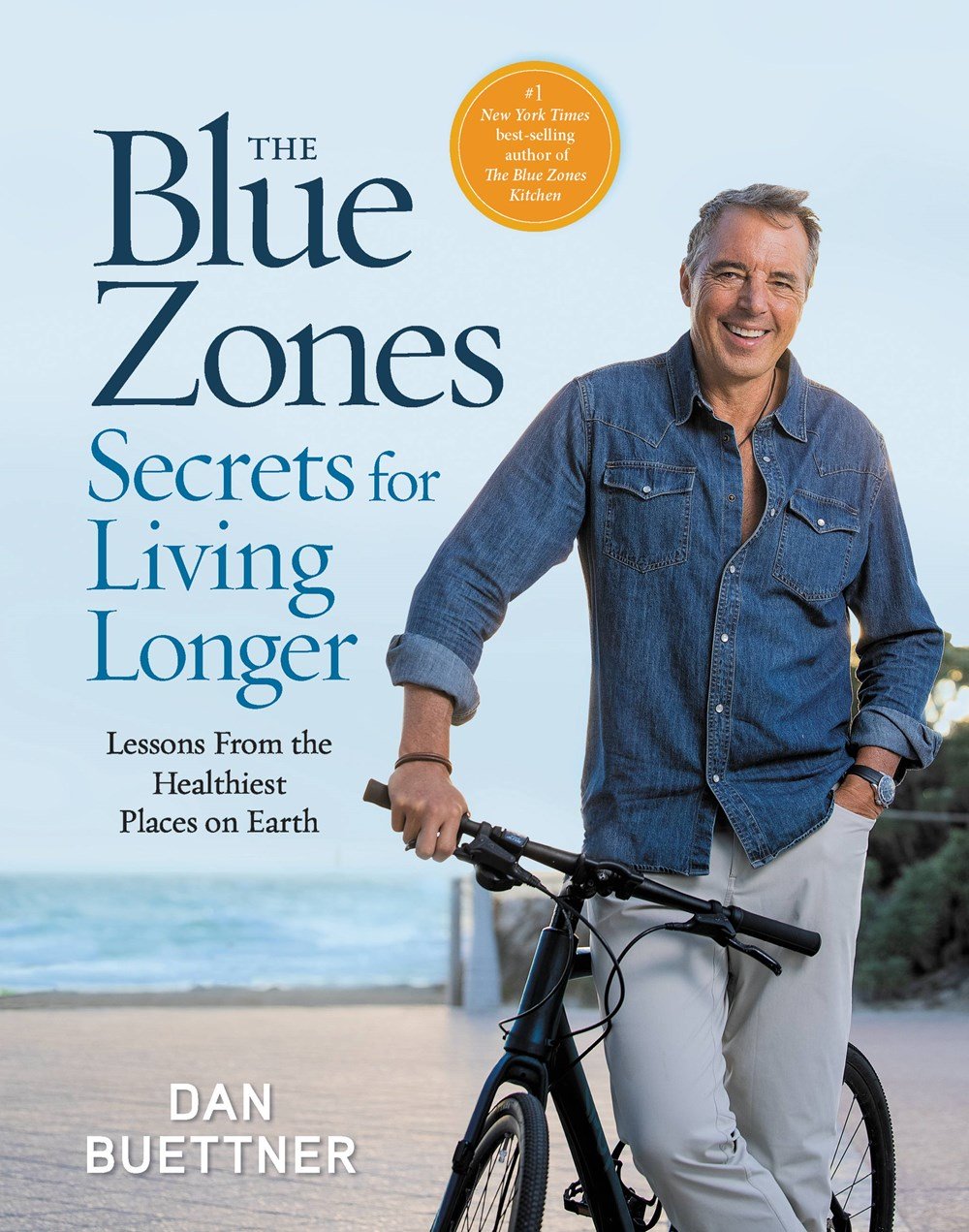As an educator and journalist, I’m always looking for gaps in knowledge—the details that most people don’t seem to know or properly understand, even when they know the stuff around those details.
I notice that a lot of those gaps in knowledge are, in a phrase, missing definitions. We might know vaguely what something is, but not well enough to explain what it is or make practical use of the information around it… and that’s why I bother to “define” some of the things you’ve known your whole life.
There’s a surprising amount that people don’t know about everyday things—not in spite of their familiarity, but actually because of it. That’s the spirit in which I’ve taken a closer look at rice over this and the previous edition.
And I enjoy filling those gaps in knowledge. But what I enjoy even more (when I have the opportunity) is making people aware of things they maybe didn’t know existed, however big or small.
Today’s opportunity is small, but it’s an opportunity just the same—in this case, to put words to one of the hardest moments of a typical person’s day (getting out of bed). Give people the words to capture something and you give them the power to exert some control over it.
So let’s get into it!

Last time in Pantry Powerhouse, I decided to re-examine the world staple known as rice because, as with anything so ubiquitous, the details often get lost. So I restored five (sets) of those details in the form of Q&As, and I’ll be restoring five more today!
I started with the more general, abstract questions last time and, while today’s first question is similarly high-level, the other four go deeper into specifics. So without further ado…
1️⃣ Different brands aside, why are there so many varieties of rice at the grocery store? There are dozens on the shelves and I’ve only ever bought a couple of them!
Well, to start with a bit of a smart-ass answer, they’re on the shelves because somebody buys them. In other words, people have (collectively) decided that all of those rice varieties serve particular purposes well, or else they wouldn’t be there.
The wide array of rice options seems a little less weird when you consider that, unlike the wide array of pasta options…
- There are genetic differences between rice varieties, meaning that they diverge in a lot more ways than just their size and shape.
- Rice is both an ingredient and a food. In other words, rice can just be eaten as rice, but it can also be used to make everything from risotto to vinegar.
The simplest way to explain the huge number of options for both rice AND pasta is to observe that they are (or are made with) what I call “blank-canvas carbs,” meaning that clever chefs and chemists can turn them into a zillion different things depending upon how they’re processed and prepared (and, because they’re carbs, our brains will probably like them).
2️⃣ What are your favorite kinds of rice to use in everyday cooking and why?
Me personally?
Go ahead and roll your eyes, but I really am a brown-rice kinda guy most of the time. I won’t try to convince you if you don’t like it, but to “state my case” anyway: I generally don’t expect rice to have much flavor or even character by itself. I mostly just want it to be properly cooked and clean-tasting, because the flavor is coming from elsewhere on the plate, and the rice—like bread or pasta—is mostly just there to soak it up.
Of course, per all of the above, there are times when I’ll switch it up. For example, I might use jasmine rice if I’m making something Thai-adjacent, or basmati rice if I’m making something subcontinental. There’s something beautifully fragrant about them, and they just pair better with the food.
There are further exceptions—like using sushi rice to make sushi rolls, or arborio rice to make risotto—but by then, we’ve exited the realm of “everyday rice for everyday dishes” and entered the realm of “rice as an ingredient, not a food.”
3️⃣ I know how to follow package directions, of course, but… do you have any pro tips for cooking that everyday rice?
Yes I do! They’re a tad scattershot, but I’ve got three for you:
- If cooking on the stove, resist the temptation to stir the rice while it cooks (or, as the kids would say, DFWI). It’s contrary to usual best practices, I know, but rice is one of those things that can definitely be overworked. Follow the directions, trust the process, and feel free to go do something else while it cooks. (Don’t turn the heat higher to make it go faster. That doesn’t work here.)
- Get yourself a rice cooker. It’s one of the simplest, cheapest, and most useful kitchen appliances in the world—and while I’m not a rice-cooker connoisseur, I’ve known plenty of people who swear that fancier is not better and sometimes even that the cheaper ones work better. (That’s certainly true for toasters in my experience.)
- Pre-portion your rice (and consider buying it in bulk). It sounds like a small thing, but having rice already measured out and ready to cook makes kitchen life a lot easier and cuts down on mess. And while this last bit isn’t a cooking tip per se, bear in mind that rice doesn’t spoil when it’s properly sealed—so if you want to buy one of those big burlap sacks for a bulk discount, I say have at it!
4️⃣ To rinse the rice or not to rinse it? That is my next question.
As usual, it depends.
There are some situations (like sushi rice) where the rice does need to be rinsed, and very thoroughly, for the best possible results. There are other situations where you should NOT rinse the rice, like risotto or rice pudding.
As for the gray-area situations where it’s the cook’s choice?
Just bear in mind that rinsing rice washes off starch, which usually results in fluffier rice that doesn’t stick to other grains as well (sushi rice has to be rinsed because it’s short-grain and especially starchy in the first place). So if you like fluffy rice, rinse it; if you prefer stickier rice, don’t.
5️⃣ I have a guess, but… what’s your opinion of the rice mixes (think Rice-a-Roni) that you can buy at the grocery store?
Your guess is correct: I definitely don’t love them for you, nutritionally speaking. You could do a lot worse, but you could also do a helluva lot better.
To be clear, most of the Rice-a-Roni-type products I’m picturing aren’t problematic for instant-rice kinds of reasons. Many of them still take 20-25 minutes to cook, which (in this context) is a good sign because it suggests that the rice itself hasn’t been overprocessed.
So, if we’re being specific, the main problem with the Rice-a-Ronis of the world is not the Rice, but the Roni—in other words, the little packet of flavoring mix that makes the rice taste like something. Read the ingredients on the back, observe that many of them sound less than natural, then realize that every single ingredient on that list except for the rice is found in that little packet. And therein lies the rub.
The good news is that it’s pretty easy to duplicate the idea yourself (even to put together your own little kits if you want): you just need rice and flavorings. If you want to copycat something, parse through the scientific mumbo-jumbo in the ingredients and find the actual spices, then pull those from your spice cabinet.

As I’ve said other times, the blue zones are not regular places where exceptional people live to 100; they’re exceptional places where regular people live to 100. And that’s just as true today, but instead of focusing on the “exceptional places” as we usually do, we’re going to take a look at the “regular people” first.
Simply put, blue-zoners put their pants on one leg at a time just like everybody else. So…
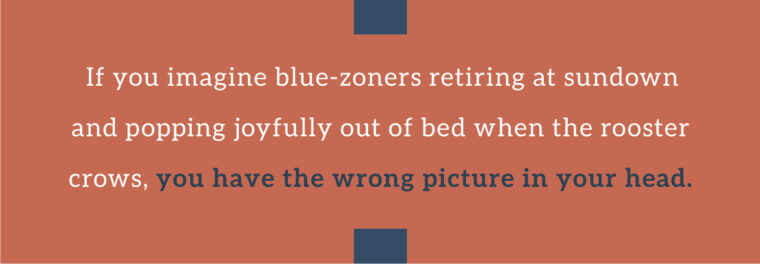
Just like us, many of them lose track of time sometime during the second glass of wine—and regardless of how much they drink or how well they sleep, many of them struggle to pull themselves from their warm beds in the morning.
Even so, there are some telling differences, like a notable scarcity of alarm clocks and the fact that the divide between early birds and night owls isn’t so wide or contentious. It’s human to struggle to get out of bed, but they don’t usually struggle like we struggle.
In this article, I want to examine one of the hardest moments in a typical person’s typical day—getting out of bed—and figure out what the blue zones can teach us about making it easier.
The main advice I’m sharing here is not native to the blue zones (so far as I know). Neither is my main exemplar here—my dad Roger—but this advice still describes something they understand better than us in the blue zones, whether or not they realize it themselves.
The advice in six words: getting up takes one heroic minute.
I’ll unpack what this means but, if you can internalize this idea, getting up (at any hour) won’t seem to require as much grit as it currently does.
Now, growing up, I was under the same illusion as any other kid—that my parents were superheroes, basically—and one of my dad’s “superpowers” was getting up early. I simply could not fathom how he could be awake and happy about it at such an ungodly hour (which, in hindsight, wasn’t so ungodly), and relative to his afternoon self, he was gently vibrating with energy.
Meanwhile, like most teenagers, I was still mumbling and shuffling. I wasn’t sure that I wanted to be a morning person like him, but it definitely seemed like a superpower.
There were parts I began to understand as I got older, but others continued to elude me—particularly how my dad was seemingly able to spring out of bed fully awake and skip that Snooze-smashing period that so many of us cling to. Fortunately, I thought to ask him about it at one point, and it cleared up more than I thought it would.
Parts of my dad’s “superpower” were leftovers from childhood illusions—memories I hadn’t thought to re-examine closely. In some cases, for example, he only seemed fully awake at early hours because, if I was awake at all, I wasn’t my most perceptive self. 😆
He also explained that part of it was just habit—a tendency that, past a certain point, didn’t require effort to maintain. I’d imagined that he was making this Herculean effort every single morning when, in his mind, he was just… well, getting up.
But then he explained (what I consider) the linchpin of his “superpower”—and while I didn’t encounter the “heroic minute” phrase until later, that’s the best way I can think to sum it all up.
So let’s talk a little bit about that one heroic minute and get into a few pieces of practical advice for you to play with!
If nothing else, I think the term “heroic minute” is useful vocabulary for describing the moment in time we can all picture. The mental struggle of getting out of bed is universal, but now we have a term that puts a finger on it.
But aside from description, the term also provides a sort of prescription: you have to muster a kind of heroic strength, but only for one minute. It suggests a certain way of thinking to help you solve a problem: instead of watching a game of tug-of-war between your childish id and adult superego, your brain can grab onto this specific idea and make use of it. (And let’s face it: a lot of us need something to mentally grab onto during that moment, particularly because the moment taxes our willpower when it’s at its weakest.)
The word “heroic” might make it sound impossibly hard, but let’s remember that courage and heroism come in all shapes and sizes. It’s not the same as a firefighter running into a burning building, sure… but it does take a certain amount of “heroism” to rip off a Band-Aid like you know you should, and the exact same principle is at work here.
Why is it common sense to rip a Band-Aid off rather than peel it? Because (A) it has to come off anyway and (B) the gentle approach actually hurts more! Again, it’s the same principle with getting out of bed: we’re going to have to get up eventually, and hitting the Snooze button five times will only prolong the misery.
But we can only get so far trying to reason or argue with the mind here, in one of its least rational moments. So, rather than suggest a handful of thoughts you can use to motivate yourself out of bed, I’ll give a couple practical suggestions that don’t really require any thinking:
🅰️ Don’t stay in your bedroom. As we all know, the fight happening in your brain isn’t necessarily over when both of your feet are on the floor. Given any excuse, plenty of us would fall right back into bed if we had the opportunity—so we need to deny ourselves the opportunity, if only for one minute or so.
Fortunately, most of the things that people would suggest to help yourself wake up, like coffee or a shower, are not usually near the bed. But first you have to actually get out of bed and, to help with that detail, one other suggestion:
🅱️ Get yourself a bathrobe or some equivalent. The main reason people cry on the inside when getting up is the same reason people cry on the outside when they’re first born: it’s cold out here and I don’t like it.
Cruelly, too, you’re supposed to keep your bedroom colder at night. This helps you sleep more deeply, but it also makes it more painful to get out of bed in the morning.
The solution: something to keep you warm between here and there. I’m not the best person to offer fashion advice (so I won’t say it has to be a bathrobe), but then again, I don’t think of it as fashion advice; I think of it as practical advice. Instead of shivering for the first few minutes of your day (not a fun way to start), you just slide on a bathrobe or something similar and it’s like the bed got up with you!

Red Beans and Rice
Ingredients
- 3 T olive oil
- 1 cup chopped onion
- ¾ cup chopped red bell pepper
- 4 garlic cloves, minced
- 3 cups uncooked brown rice
- 3 bay leaves
- 2 T tomato paste
- 1 T ground cumin
- 1 T hot Spanish smoked paprika (Pimentón de la Vera)
- 2 tsp salt
- 4 cups water
- 1 (15-15 ½ – oz.) can kidney beans, rinsed, drained
The Method
- Sauté onion, red bell pepper, and garlic in a heavy 4-quart saucepan over medium-high heat. Sauté until onion is golden, about 5 minutes.
- Add rice and stir until coated, about 1 minute.
- Stir in bay leaves, tomato paste, cumin, paprika, and salt. Add 4 cups water and beans and bring to boil. Reduce heat to medium-low; cover and cook until rice is tender and liquid is absorbed (about 18 minutes). Remove from heat; let stand covered 10 minutes.
- Fluff rice with fork. Remove bay leaves.
- Transfer rice to bowl and serve.
